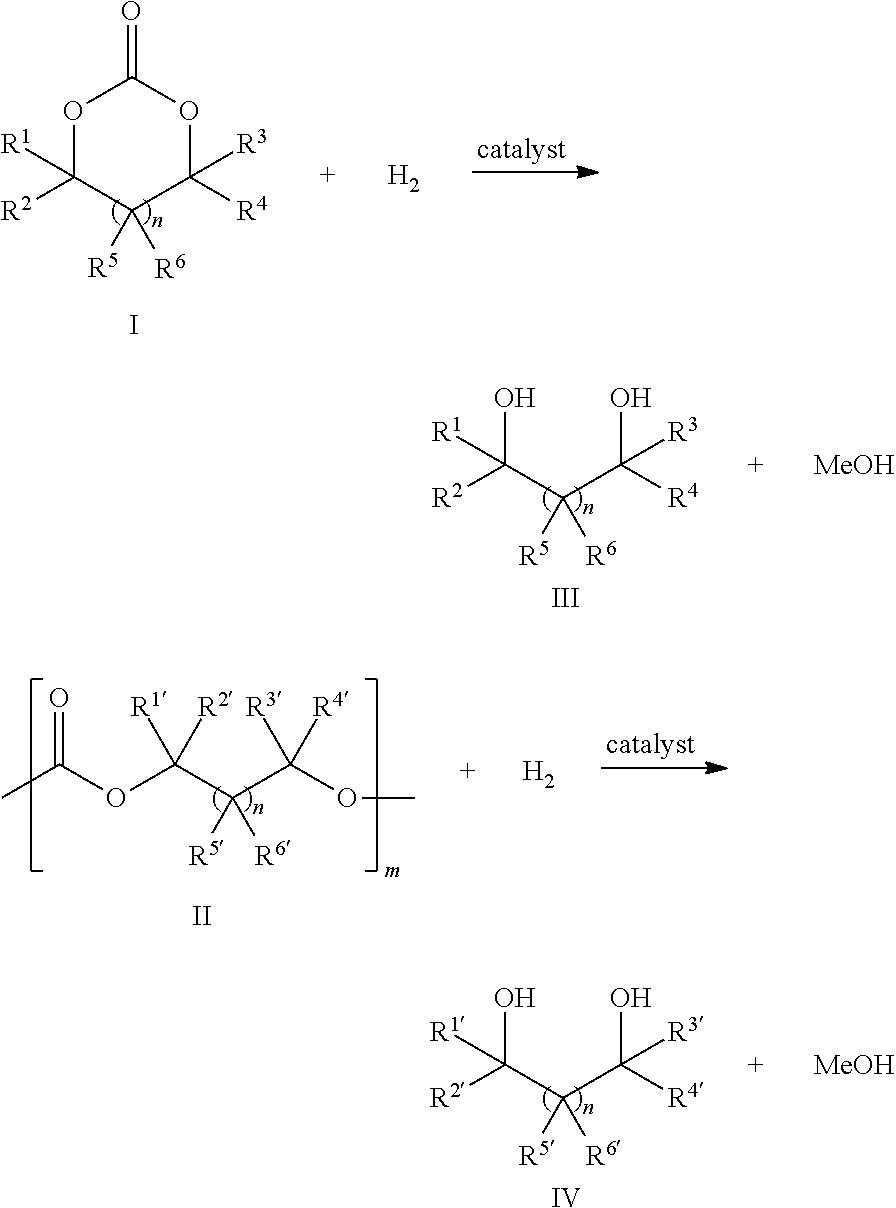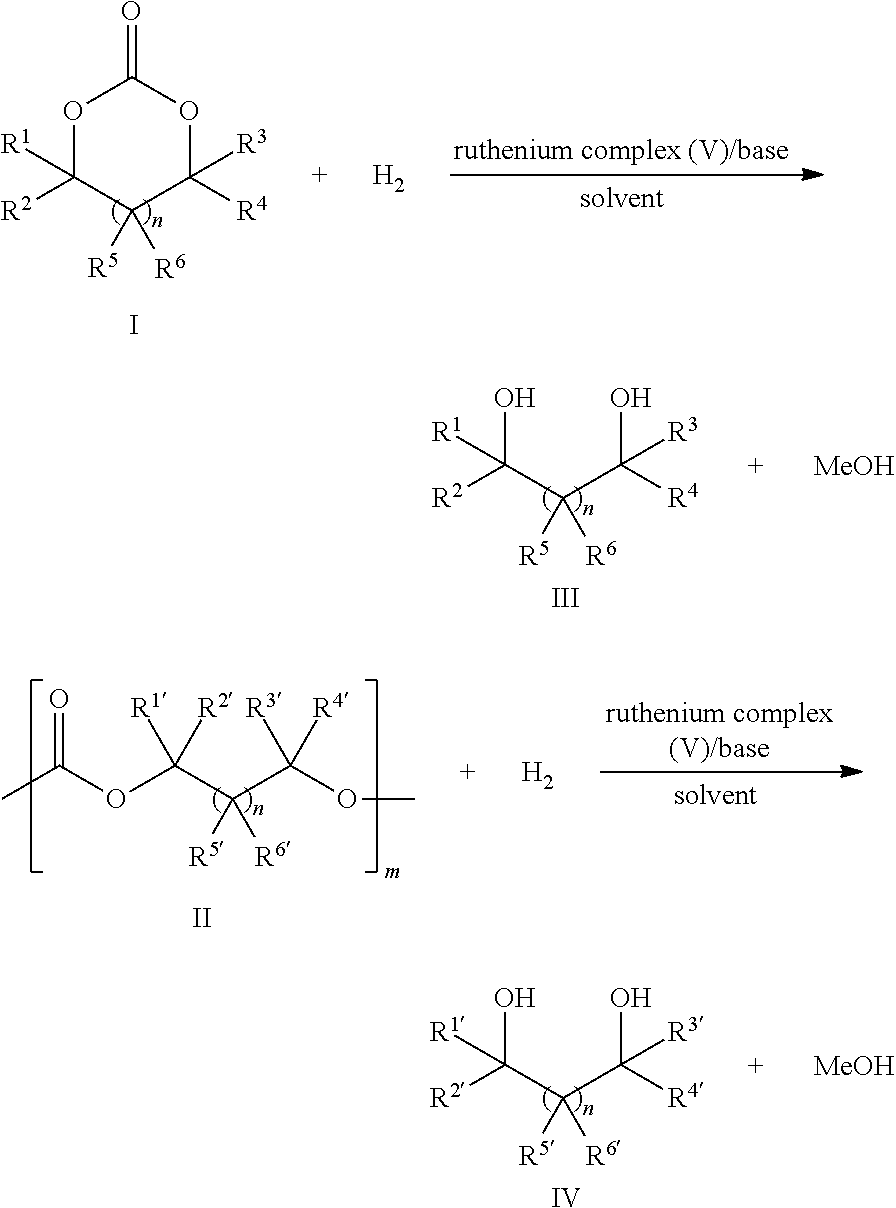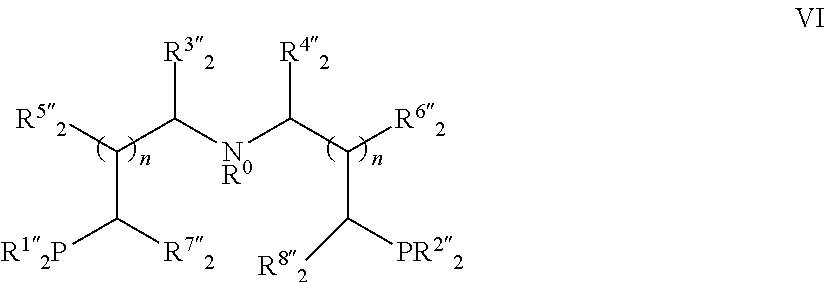Ruthenium complex and method for preparing methanol and diol
a technology of ruthenium complex and methanol, which is applied in the field of organic synthesis, can solve the problems of difficult regeneration of resources, direct influence of product quality, and depletion of fossil fuel resources
- Summary
- Abstract
- Description
- Claims
- Application Information
AI Technical Summary
Benefits of technology
Problems solved by technology
Method used
Image
Examples
example 1
Preparation of Catalyst Ruthenium Complex 1a
[0164]
[0165]Under an inert gas such as nitrogen or argon atmosphere, into a 100 mL Schlenk tube was added HCl.HN(CH2CH2PPh2)2 (1.20 g, 2.51 mmol), toluene (20 mL) and 15% aqueous sodium hydroxide (10 mL). The reaction mixture was stirred at room temperature until the solid was completely dissolved. The organic phase was separated under an inert atmosphere, and washed twice with distilled water (2×5 mL). The combined aqueous phase was extracted twice with toluene (2×10 mL). All of the organic phases were combined and dried over anhydrous sodium sulfate. The drying agent was removed by filtration, and the solvent was removed under reduced pressure in vacuo to give a crude product of free amino bisphosphorus ligand. The crude product was dissolved in toluene (18 mL), RuHCl(CO)(PPh3)3 (2.28 g, 2.39 mmol) was added, and refluxed for 2 hours. The reaction system was cooled to room temperature, and hexane (10 mL) was added. Precipitates were filt...
example 2
Preparation of Catalyst Ruthenium Complex 1b
[0167]
[0168]HN(CH2CH2PiPr2)2 (217 mg, 0.710 mmol) and RuHCl(CO)(PPh3)3 (644 mg, 0.676 mmol) were dissolved in toluene (4 mL), and heated under reflux for 5 hours. The reaction was cooled to room temperature, and hexane (6 mL) was added. The precipitated solids were filtered, dried by suction to obtain ruthenium complex 1b (288 mg, 90% yield).
[0169]1H NMR (400 MHz, CDCl3) δ 3.50-3.39 (m, 1H), 3.31-3.26 (m, 2H), 2.77-2.65 (m, 2H), 2.35-2.09 (m, 6H), 1.86-1.74 (m, 2H), 1.60-1.44 (m, 6H), 1.34-1.08 (m, 18H), −16.30 (t, J=19.2 Hz, 0.12H), −16.54 (t, J=18.0 Hz, 0.88H) ppm; 31P NMR (161.9 MHz, CDCl3) δ 74.6 (s, br) ppm; HRMS (MALDI) m / z calcd. for C17H38NOP296Ru: 430.1499. Found: 430.1502 [M-Cl]+; IR (film) 1973, 1960, 1910 cm−1.
example 3
Preparation of Catalyst Ruthenium Complex 1c
[0170]
[0171]According to the procedure of Example 2, HN(CH2CH2PiPr2)2 was replaced with HN(CH2CH2PtBu2)2 to obtain ruthenium complex 1c (85% yield).
[0172]1H NMR (400 MHz, CDCl3) δ 6.44 (br s, 1H), 3.52-3.37 (m, 0.9H), 3.31-3.19 (m, 2.1H), 3.06-2.91 (m, 2.1H), 2.81-2.69 (m, 0.9H), 2.46-2.14 (m, 4H), 1.77-1.25 (m, 36H), −16.03 (t, J=19.4 Hz, 0.6), −22.32 (t, J=18.4 Hz, 0.4 H) ppm; 31P NMR (161.9 MHz, CDCl3) δ 89.0 (d, J=9.1 Hz), 87.6 (s) ppm; HRMS (MALDI) m / z calcd. for C21H46NOP296Ru: 486.2125. Found: 486.2120 [M-Cl]+; IR (film) 1897 cm−1.
PUM
| Property | Measurement | Unit |
|---|---|---|
| molar ratio | aaaaa | aaaaa |
| temperature | aaaaa | aaaaa |
| reaction time | aaaaa | aaaaa |
Abstract
Description
Claims
Application Information
 Login to View More
Login to View More - R&D
- Intellectual Property
- Life Sciences
- Materials
- Tech Scout
- Unparalleled Data Quality
- Higher Quality Content
- 60% Fewer Hallucinations
Browse by: Latest US Patents, China's latest patents, Technical Efficacy Thesaurus, Application Domain, Technology Topic, Popular Technical Reports.
© 2025 PatSnap. All rights reserved.Legal|Privacy policy|Modern Slavery Act Transparency Statement|Sitemap|About US| Contact US: help@patsnap.com



